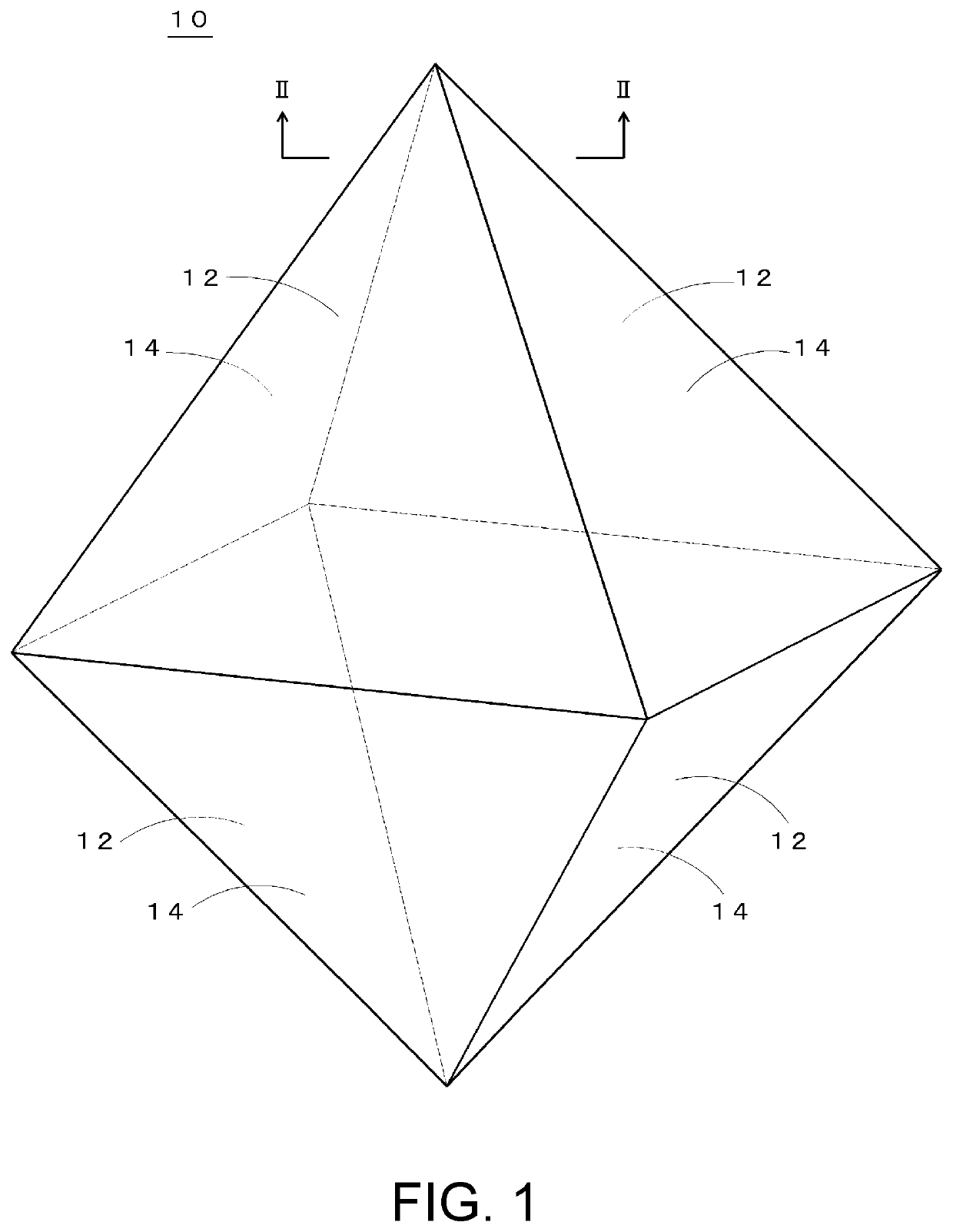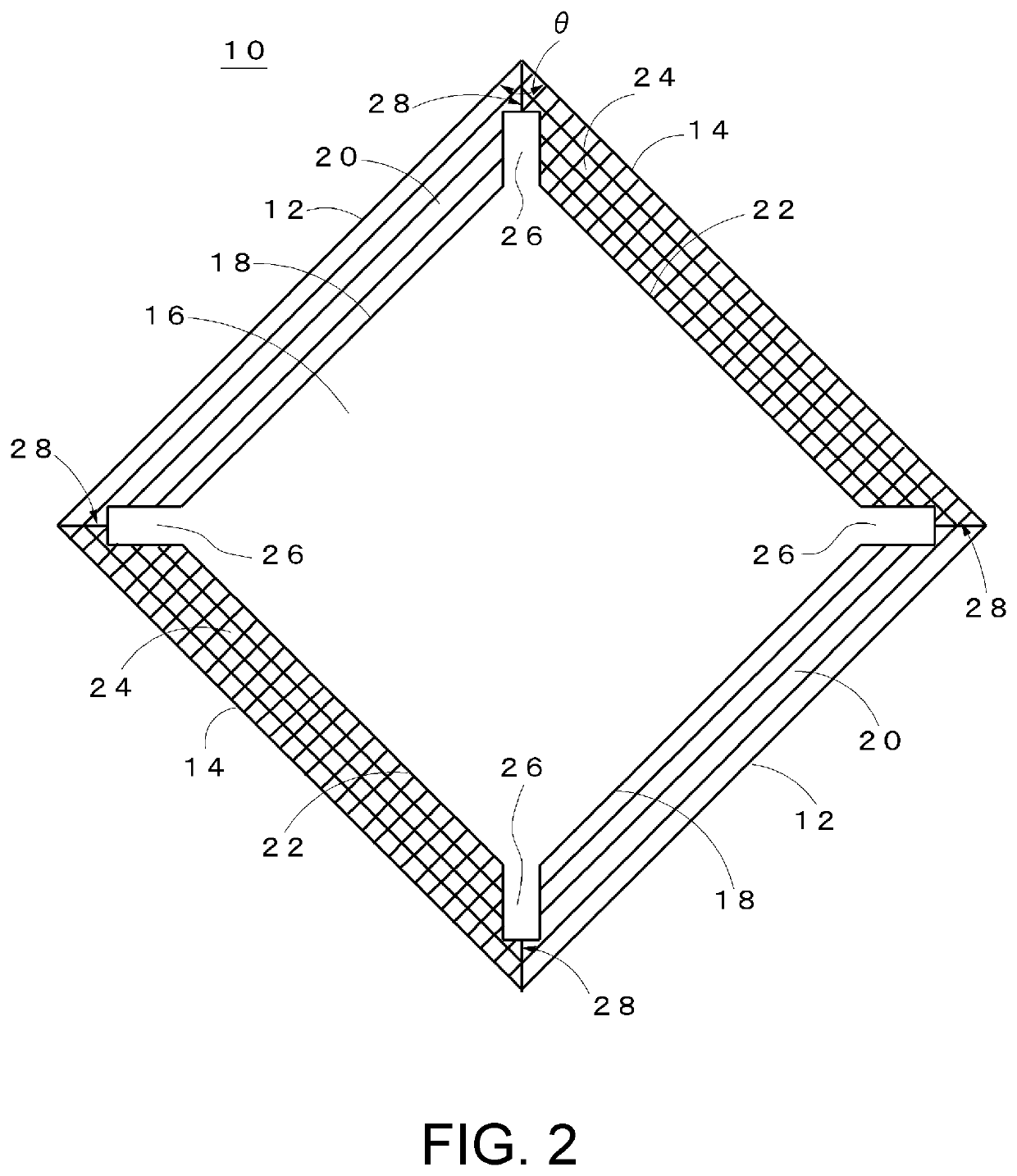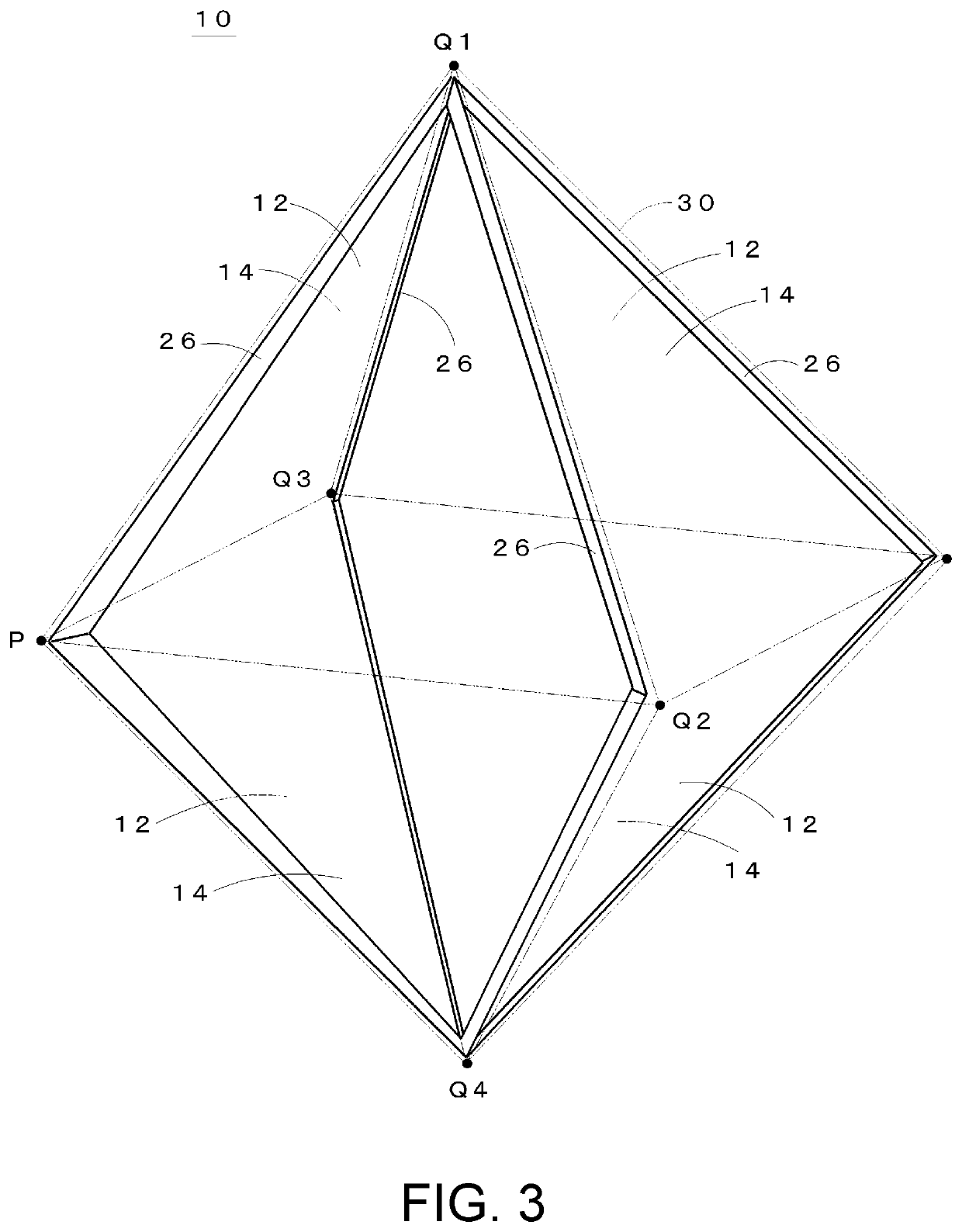Three-dimensional object, three-dimensional shaping apparatus, and three-dimensional shaping method
a three-dimensional object and shaping apparatus technology, applied in the field of three-dimensional objects, three-dimensional shaping apparatuses, and three-dimensional shaping methods, can solve the problems of reducing the quantity of light reflected from the surface of the partition layer, and the partition layer is barely visible from the outside of the three-dimensional object, and achieves satisfactory visual color quality.
- Summary
- Abstract
- Description
- Claims
- Application Information
AI Technical Summary
Benefits of technology
Problems solved by technology
Method used
Image
Examples
Embodiment Construction
[0027]Hereinafter are described embodiments of a three-dimensional object disclosed herein referring to the accompanying drawings in connection with a three-dimensional shaping apparatus and a three-dimensional shaping method.
Description of Three-Dimensional Object 10
1. Structure of Three-Dimensional Object 10
[0028]FIG. 1 is a perspective view of a three-dimensional object 10 according to an embodiment of this disclosure. FIG. 2 is an enlarged cross-sectional view taken along II-II line in FIG. 1. FIG. 3 is a schematic perspective view of the three-dimensional object 10 illustrated in FIG. 1.
[0029]As illustrated in FIG. 1, the three-dimensional object 10 is an object having a shape with an aspect ratio slightly changed from that of a regular octahedron. This object has four outermost surfaces 12 in the shape of an equilateral triangle. These outermost surfaces 12 are colored in a first color (for example, red). This object further has four outermost surfaces 14 in the shape of an eq...
PUM
| Property | Measurement | Unit |
|---|---|---|
| aspect ratio | aaaaa | aaaaa |
| thicknesses | aaaaa | aaaaa |
| thicknesses | aaaaa | aaaaa |
Abstract
Description
Claims
Application Information
 Login to View More
Login to View More - R&D
- Intellectual Property
- Life Sciences
- Materials
- Tech Scout
- Unparalleled Data Quality
- Higher Quality Content
- 60% Fewer Hallucinations
Browse by: Latest US Patents, China's latest patents, Technical Efficacy Thesaurus, Application Domain, Technology Topic, Popular Technical Reports.
© 2025 PatSnap. All rights reserved.Legal|Privacy policy|Modern Slavery Act Transparency Statement|Sitemap|About US| Contact US: help@patsnap.com



